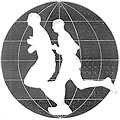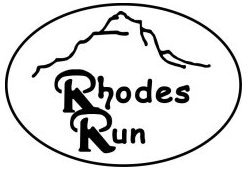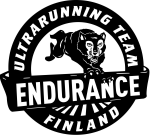World Run II / Reports
|
Loading...
|
|
The map shows the position of which the pictures for the day are taken (if any).
The start and finish markers are placed at the first and last valid registered position.
This is not nessesary the actual start and finish position, if GSM or GPS signals was not available.
|
Goto:
![]() 2012-05-22
2012-05-22
![]() 2012-05-24
2012-05-24
![]() Usa
Usa
Distance today: 20.0 km (Accumulated: 35145.0 km)
Elapsed time: 01:49:45
Country: Usa
Start 10:30am., 19c, half overcast & light wind, at cross of "Old Highway One" & Hwy.1, Searsport. Finish 13:18pm., 21c & same, at cross of Colby Crossing & Hwy.46, Bucksport.
100miles to... Canada :-)
Up ahead is a remote streatch on the local highway 46 & hwy.9; then the Canadian border comes up. To those who follow world run two in deatails I am sure its no secret that I have been looking forward to reaching Canada for a looong while now. And finally the border seems withing grasp.
Oddly, the energy isnt really present in the running at the moment: The last 3 days I have been struggeling to do 20-27km stages. I am wondering what the problem is since usually I should get more motivated once I am close to the finish. Still, with about 2000km left I am at this point much too physically fatigued to feel that I have the overall finish line "withing grasp".
I'll have to waith a bit for that :-)
Below I have pasted the 35 000km report where you can get an idea of the overall experienses of the run all the way back from the start in Nordkapp, Norway; 4 years ago.
NB: The streatch ahead is quite remote and I expect our little team will have 'wild-camping' all the way to the border as my maps shows a tiny grocery-store as the only inhabited point untill the border-town. So reports may be delayed untill then. On the other hand it should be a great nature-experience, wich I look much forward to !!
35 000km report
As usual at the big mile-stones of the world run's I try to sum up the experience; and to compare across continents, physical fatigue, mental stamina/motivation, cultures, nature and finish off with some equiptment eveluation.
I will keep it fairly brief, but for a more detailed look at what happens during a run like this there is the half way report (link at front page), or the daily reports..
- Overall I have to say that this second run around the world has been considerably harder than the first one, 2004-2005 East-West around the world. One could say that its no surprise since including a run straight across Africa and South America in this 2. run obviously results in both physical, health- and logigistics obstacles far out of the ordinary or what we are used to in the western world/ultra races in 'a controlled enviroment'.
Yet the difficulties goes a bit beyond this. Certainly there were challenges about as strong as they can be found, running through the Sahara Desert (at the same time one of the absolute highligts :-); running through 1 month of stone-throwing on the stages in Northern Ethiopia; 7-8 months w. tropical diseases on a weekly basis through East Africa. Two operations on international hospitals during that section (both to remove a fast spreading infection in the right arm, though it could have been worse. It was never life-treathening).
- The surprising part, as I see it, is that the main obstacle this second time was not the physical/endurence part; not the balance of avoiding injuries; instead it was mostly motivational. It would seem logical that as the km's in the body accumulates then the fatigue and injury proneness raises along w. the total body-km: by now I more or less have about 120 000km since the start w. marathon running at age 15 in the 1980'ties; perhaps a little bit more but that is the recorded ones in the training-logs' plus the two wr's. Albeit in that department there hasnt really been more obstacles or more severe fatigue than in world run one. After various diseases, malaria and the operations during the East Africa streatch I certainly was as worn out as I've ever been. But before and after this streatch its been surprising how its definately not more physically straining this time compared w. the first time around the world.
No, the main challenge to battle with this time compared w. the first world run has been motivation ! Seen in hinsight its not that puzzeling, I guess. The first time all challenges are new and there is a big "draw" towards finding out how the body will react to this ultimate endurence challenge. Athletes who venture into the world of ultra-running probably are more driven by curiosity and the desire to see "where the road ends" in ways of their own capabilities (or they sense, that there is "no end" as far as human endurence is concearned, a thing wich I think goes for all of us no matter if we discover it in our lifetime or not ;-). And those who venture even further, who are not satisfied by the normal challenges ultra-running offers, the championships, the multi-days, the 1-2-3 week challenges through bits of deserts or jungles - they most likely are even more extremely motivated by the "unknown" or the "boundaries of human capabilities". So also I. However, unless I found another planet to run around - its hard to find the same exitement, the same feeling of the "Unknown" this second time I headed out running the roads of the world.
And that probably poses the biggest obstacle of all in this run. Only it took some 30 - 35 000km to realise it fully.
Its not been helped by that this last streatch, North America, has been by far the lest inspiring or exceptional; in ways of nature, culture and challenges. In one way it was an important decition of logistics - had I put a section like Africa or even South America as the last 10-12 000km of the run... Then there would have been no chance that I could have handled it. Physically those enviroments put you in a situation where the strain on your health cant afford that you put 35 000km of running on top of it. In the tourist areas and big cities, yes, but out on the month-long remote streatches under a tropical sun, w. returning diseases and limited food and water avaliable - its a "show stopper".
Yet, I would have imagined the East Coast Usa more interesting than it turned out to be. It may very well partly be due to the economical depression (the rethorics has just the last week or so changed from "resession" to
"depression"; wich one w. a political science background obviously picks up on. Not a good sign though: In economic terms Ressesion implies a longer period of decline wich though holds possibilities of changing into a cycle of progress - depression is a situation where the decline has caugh on and stabilized in a lack of economic growth and a more permanent job-loss. At the moment the estimates is 5million registered unemployed in usa). This kind of economic crisis cannot but be fealt as you run through a contry step by step. And it looks like only a very little part of this are shown in the main-stream media; I was nearly shocked by the spread and degree of poverty throughout the Soutern States; Georgia, South & North Carolina. There would be weeks of running wich didnt even remind me of South America's poor areas. The houses were in worse condition here than back in South America and at first I was certain that no one lived there - but at a closer look those small cities and villages in Southern Usa wasnt deserted; only the life was lived very quiet and apparently in long-term poverty. I never saw as much as one minute from those areas in tv during the now 5 months of running here.
However; there were also very positive and warm sides to running in Usa. By a long leap Florida was a straight out Fantastic place to run. Much contrary to my expectations of finding a "retirement paradise" with soft chairs, soft hats, long days at the beach etc. - Much raughter the Florida I found was if anyting a "ultra running paradise" ! One of the most thriving and well connected ultra-running communities I have encountered. And right aside the amazing, motivating and helpfull sports-communities in South Africa, Australia, Finland and similar 'pockets' where sport as maneaged to spread and evolve into more than a way-of-life but also a main-stream culture; wich makes it intensely inspiring areas to run through; tired or not tired; economic crisis or no economic crisis.
Culturally I will say that the highlights were the Middle-East, wich fortunately was a very peacefull place by the time I ran through the region, in the autumn and winter of 2009. Sadly this has changed. But I have not forgotten the friendship, helpfullness and hospitality to a total stranger - even one with a different religion than theirs and from a contry that had recently engaged in a diplomatic 'debacle' w. the muslim world. They met me with nothing but Kindness and generosity, and this will stay with me as one of the most valuable things in this run around our planet. Its precious when cultures that we are presented with as "hostile" turnes out to be the opposite: friendly and curious towards a polite talk about our different values. It gives one hope both as a political scientist, and as one tiny runner in a world of billion of people who spend most of their days with no hostility, yet are presented to eachother via media as if they were a more or less constant treat ! Ironic indeed that we call this "the information era".
It raughter looks like we are shown a few extremes in our evening news, and overlooks the bigger picture !
As far as nature experienses goes then its South America wich is in focus. Absolutely Amazing sceneries. Unlike in Europe, The Middle East, N. America/Usa, or even Africa - its not a day, week or month of amazing landscapes. Its month after month of "WOW !!". From remote coastal deserts in Chile; hosting some of the largest astronomical observatories in the world due to the crystal clear sky at night, situated 2000m. above sealevel, 1000' of miles from pollution in large scale; Silent clear nights in the expedition tent unable to fall asleep due to the outrageous display of stars, sattelites, planets; sailing by in a clearity as if they were just a few km's above the nearest desert mountains.
Then the sudden change of Peru, ancient archeological remains often right at roadside waiting for a tired runner to take a lunchbreak and have a look :-) Further North, the dense growth resulting from having one of the highest concentration of different climate-zones due to the rapid climb of the Andes Mountains from the Pacific Ocean w. steamy humid banana plantations, temperate agriculture on the mountain sides (mangoes, pineapple, papaya, oranges, watermellon, chocolate beans and countless others I no longer remember the names of). Topped by alpine landscapes of up to 4000-5000m. altitude, some active volcanic peaks - and then the road descends again into the rainforrest on the East side of the Andes.
Not a day without a change in scenery.
- No surprise, perhaps, that it later became hard to run month after month along the highway, with swamp on one side and concrete on the other; up along the US coastal route.
But up ahead is Canada where I from world run one know that new fascinating landscapes wait ! Already now and since the last 10 days the nature are changing again. Areas are beginning to become more remote and nature are once again coming into focus after 4-5 months of beeing tamed by tarmac, concrete and automobiles.
To do a run like this you do not only need a body wich are able to adapt to the long-term challenges, a 'toolbox' of motivational techniques and a few years of logistics/planning before "kick-off". You also need a few essential pieces of equiptment wich can last through the years and continents:
In brief my experiense so far has been (w. the best first):
- The running clothes has been a surprise to the extend that the only thing worn out is the running socks. I changed halfway from the brand "Craft", wich didnt quite match up w. the more demanding sections of the run, to a sponsorship by "Newline" and since then there may have been a little less "bling" or fancy details. But it lasts to a point where I am stunned by what its been put through without loosing any functionality; even most of it still looks new :-)
- The shoes, definately also a piece of equiptment wich has lasted better than I could have expected. Arguably the most important 'tool' along w. the gps and the expedition tent, its central in relation to beeing able to get through a run of this scale without beeing troubled be injuries. Here in world run 2 the Danish company Ecco delivers the running shoes and so far they have lasted me through 4 deserts, 2 mountain chains and obviously 35 000km of running !
- The expedition tents is an item wich has more or less kept up w. expectations: The two sponsored tents lasted the first half of the run, through Europe, The Middle-East and half way through Africa. Since then I have bourght 3 tents in the contries I ran through. One in Africa. One in South America and one for N. America. They are of less quality as the price had to fit the long-term budget for a sponsored 4year run. So its tents in the modest range of 30-50usd. per tent. More or less what you can buy in the discount section of a larger supermarket. ...And they have actually held up basically Ok, and in most ways just as good as the professional expedition tents. My advice is that its much more important to look for the functional solution (easy clip-on inner tent/poles system; good mosquito net; simple but well-done seem especially at the ground-part; solid rain-cover). Then you get just as much value for 40usd as you get for 800usd. !
- The phones. Thats one of the few items that hasnt quite been able to meet the rough handling wich comes w. the many different enviroments and sudden changes of weather and nature. I have used 6 or 7 high-end cellphones by now. And if the budget permitted, I should be changing now as the one I am using has begon to fail since 500km back ;-) The sponsored phones by Nokia is long 'gone' by now, and my favorite choice after trying a few different brands are actually the Sony-Ericsson brand. I'd have imagined them to be a bit flimsy' and more fashion/design oriented than operationally healthy. But they last the best in rough conditions and at the same time meets the demands for both precition gps, high-speed internet and some amount of entertainment (those who know the "Xperia Play" phone will understand what level of "entertainment"... CPU-level gaming ! You can get bored after a year or two in the tent ;-) But also the battery capacity is important as its the only brand where I can track even the up to 100km long stages of the run without needing to recharge during the stage.
- Last the gps-tracking system. I think it will always be the weak link on a run and expedition as this ! On one hand it requires precition equiptment to properly document and track the run each step of the way (you once in a while sadly encouter runners who try to fake parts or entire sections of extreme runs - so its Essential to use a reliable way of public tracking. Else it just becomes a 'show' where anyting goes). On the first half I used the LifePilot system. Its strength was a multitude of extra functions fx. gps-tracked pictures and video as well as the tracking of the running itself. Its weakness was reliability. I in average spend 1-4 hours per week during the 1½ year trying to fix problems. There isnt surplus to be distracted by that if you want to succeed and also keep your focus.
On the last half I have used the Endomondo tracking system. There reliability/stability has been considerably better. Yet not what I would call "good". There still are a couple of days per months where parts or the entire days track is lost due to technical errors. I'd say that probably the end situation is equal: w. LifePilot the support was more qualified, but the system had more failures; with Endomondo the errors are less, but so is the support. Its a matter of compromise and overall both half's of the wr2 has been tracked intensely although it has takes some patience/temperament to wait to get the equiptment to function.
Finally; to sum up then perhaps surprisingly it has been the motivational challenges wich has weighted the most especially in this finishing part of world run 2. And thus, what better than to end this small report by THANKING those who has played a central role in motivating me:
... All of You wich follow the run via worldrun.org. Those that send a message once in a while. Those who I know am waiting to go for a run' once I'm home again. My family and friends. My father whom I started running with in the early mornings in 1982 - who died while I was running through South America last year. The runners I meet on the long roads across the continents; for example the running community in Finland, Denmark, South Africa and Florida.
And a few colleagues who I am communicating with while out on the long streatches: Tony Mangan, Tom Denniss and lately Rae Heim. They are respectively from Ireland, Australia and Usa. But that matters little; what matters is that they do their runs proper without 'corner cutting' and keeps the sport of continent running and world running a positive and respectable thing (no examples of the opposite mentioned, but I guess inside the sport we are sadly have seen a few).
- You can follow them at
www.theworldjog.com (Tony)
www.tomsnextstep.com (Tom)
http://flavors.me/raeainslee (Rae)
... And get another take' on what world and continent running is like. Since each run is different :-)
NB: To those who wonder about the subject of charity (wich with the high tax in Scandinavia usually is covered) then I'll go into that in the next report. There is a longer throught behind it, and a bit of political science and philosophy. And perhaps a surprise. But that has to wait untill the finish line !











